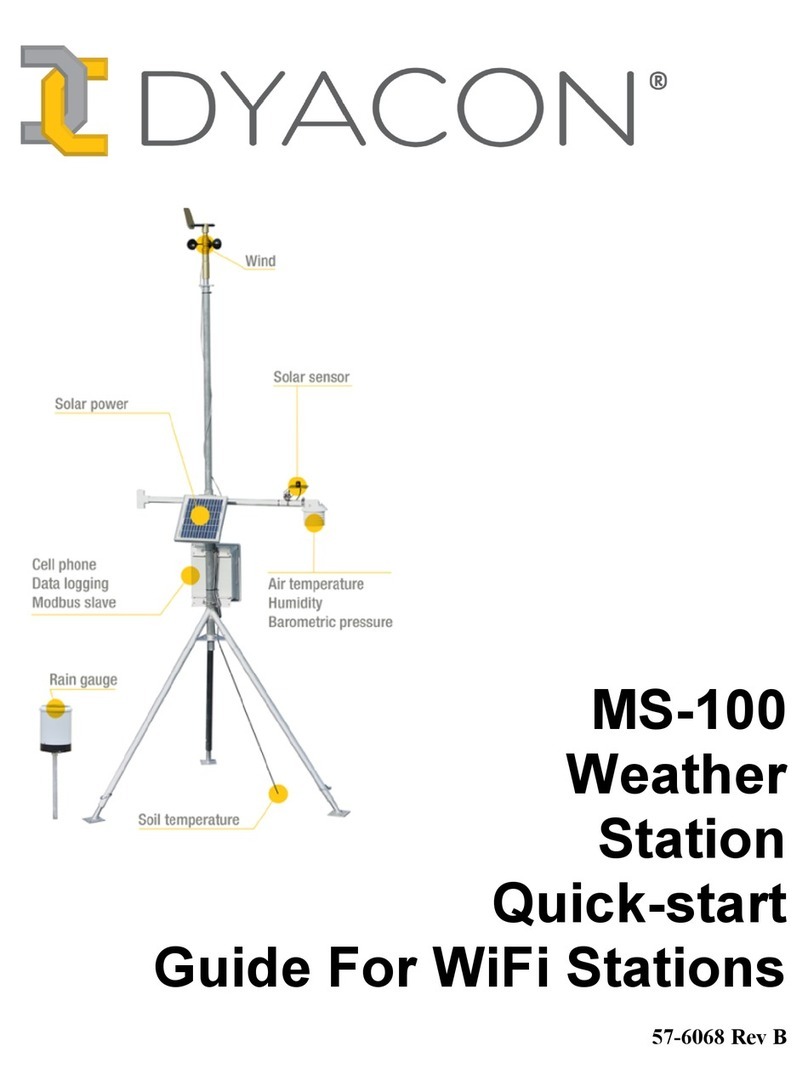
DYACON Quick-start Guide
Contents
NOTICES....................................................................................................................................................4
© Copyright 2018 Dyacon, Inc......................................................................................................4
Manufacturer..................................................................................................................................4
1.0 MS-100 INTRODUCTION..................................................................................................................5
1.1 Scope...............................................................................................................................................
2.0 CONFIGURATION DATA FORM....................................................................................................6
3.0 MECHANICAL SETUP AND INSTALLATION.............................................................................7
3.1.1 Required Tools......................................................................................................................7
3.1.2 Mechanical Setup and Assembly Summary.........................................................................8
3.1.3 Set Vane North Position........................................................................................................9
4.0 IRE CONNECTIONS....................................................................................................................10
4.1 Wire Stripping and Mounting.......................................................................................................10
4.2 Connection Diagram.....................................................................................................................11
5.0 CONTROLLER CONFIGURATION..............................................................................................12
.1.1 General Settings..................................................................................................................12
.2 Setup WiFi....................................................................................................................................12
.2.1 Set Network Name And Password......................................................................................13
6.0 DYACONLIVE...................................................................................................................................15
6.1 Setup DyaconLive.........................................................................................................................1
6.1.1 DyaconLive User Registration............................................................................................1
6.1.2 DyaconLive Configuration.................................................................................................1
6.1.3 DyaconLive Report Interval...............................................................................................16
6.1.4 DyaconLive Test.................................................................................................................16
7.0 SITE SELECTION.............................................................................................................................17
7.1 General Principles.........................................................................................................................17
7.2 Weather Station Siting..................................................................................................................18
7.2.1 Instrumentation Considerations..........................................................................................18
7.2.2 Solar Power Considerations................................................................................................18
7.2.3 Cable Considerations..........................................................................................................18
7.2.4 Wireless (Cell Phone) Considerations................................................................................18
7.3 Airport Siting................................................................................................................................18
8.0 DOCUMENT REVISION HISTORY..............................................................................................21
Page 3/21




























